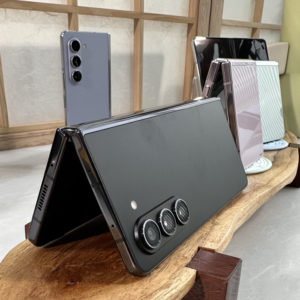Enabling richer user experiences in entry-level smartphones
Share This Post
India represents one of the world’s fastest growing smartphone markets, with the smartphone market growing by around 10% in 2018. A confluence of factors, driven by a growing aspirational class, getting more connected, via increased availability, accessibility and affordability of devices and data have contributed to this market growth.
The smart feature phones and, more importantly, the entry-level smartphone market posit a major opportunity, crucial for the continued growth of the overall smartphone market, and driving consumer upgrades and replacements. Consumer experience in the entry-level smartphone devices could be enriched by bringing energy efficiencies, improved camera and connectivity capabilities, among others.
The Qualcomm 215 Mobile Platform
Qualcomm has introduced the Qualcomm 215 Mobile Platform, aimed at enabling better, and significantly reliable and lasting performance for entry-level smartphone buyers.
Qualcomm 215 features four ARM Cortex-A53 cores and is capable of delivering significantly increased CPU performance, of up to 50%, compared to the previous generation.

This introduction of the first 64-bit CPU in the Qualcomm 215 translates into significantly improved performance and lasting device longevity via support for modern 64-bit applications. In order to deliver lasting performance, Qualcomm 215 features an integrated Qualcomm Hexagon DSP engineered to support up to 5+ days of music playback. The Qualcomm Adreno 308 GPU and the display technologies support up to 10+ hours of video playback.
In addition, the Qualcomm 215 also comes with support for Qualcomm Quick Charge technology. The Quick Charge technology enables users to charge their smartphones up to 75% faster than those done traditionally. This, in turn, means that such smartphones will benefit from reduced charge times. It will also result in lower power and thermal dissipation, and all this, without virtually any performance tradeoffs.
Dual camera systems are supported by Qualcomm 215. The 215 features dual ISPs, a first in the 2-series. With support from our 3rd party ecosystem, such dual cameras can enable optical zoom and depth sensing, resulting in overall improved detail rich photos, and capable of capturing images up to 13MP photos.
The Qualcomm 215 is the first to support HD+ resolution in the 2- series. The 215 enables better and significantly improved viewing experience, thanks to its modern aspect ratio. Consumers can browse and watch more.
The gaming experience on the 215 has a 28% increase, compared to the previous generation, and enables smooth graphics for casual gaming, all thanks to the Adreno 308 GPU.
The Qualcomm 215 is the first platform in the 2-series to support Ultra HD voice calls and Dual Sim with Dual Voice-over-LTE (VoLTE) allowing for the freedom to use multiple SIMs for concurrent high-quality 4G LTE voice and data, separation of work and personal accounts, and optimized cellular connectivity costs taking advantage of multiple plans.
The Qualcomm 215, enables superior cellular connectivity at home or on the go, via the integrated Qualcomm Snapdragon X5 modem that supports LTE Cat 4 with Carrier Aggregation for faster data rates and download speeds up to 150Mbps.
The Qualcomm 215 Mobile Platform boasts of the following “firsts” in the 2-series:
- 64-bit CPU
- Dual-ISP
- Supports up to 13MP photo capture
- Support for Full HD (1080p) video capture
- Support for HD+ resolution display
- Hexagon DSP for audio and sensor processing
- Support for Dual SIM with Dual VoLTE
- EVS voice calls
- Wi-Fi 11ac
- Support for NFC Payments on Android
Commercial devices based on Qualcomm 215 are expected to be available in second half 2019.













